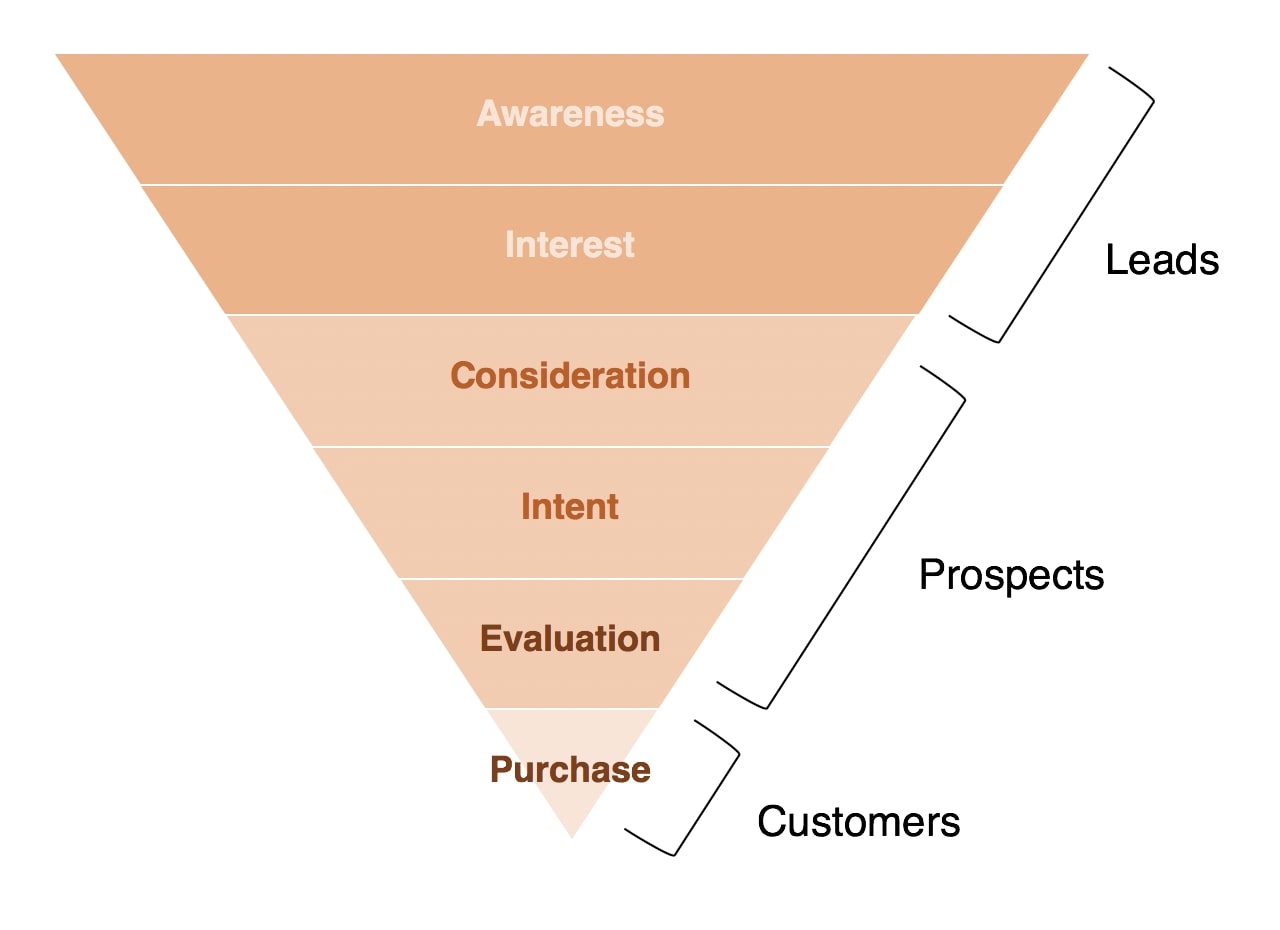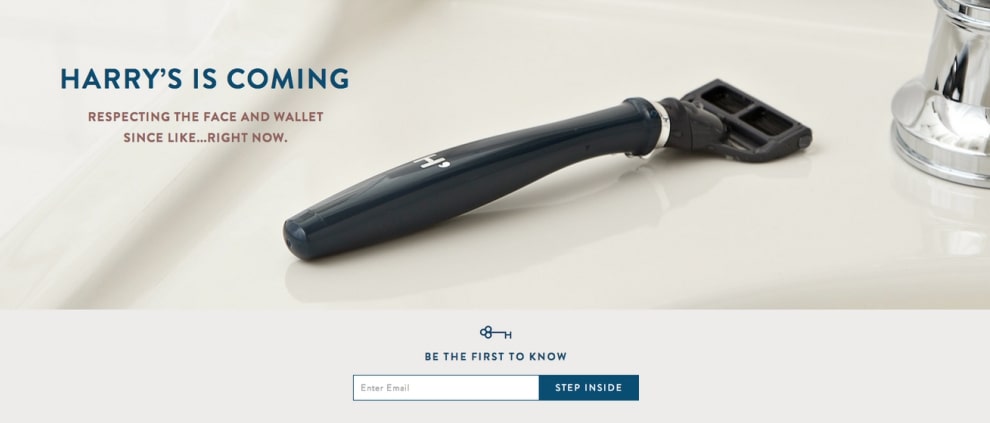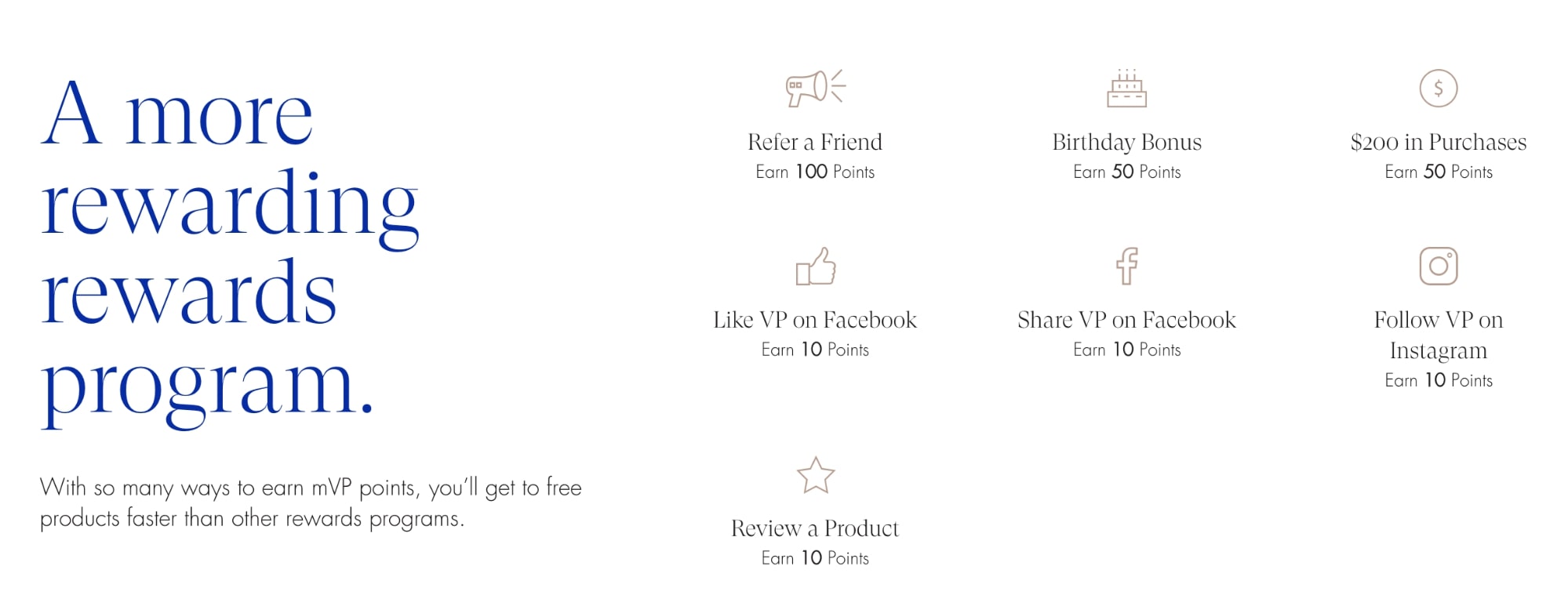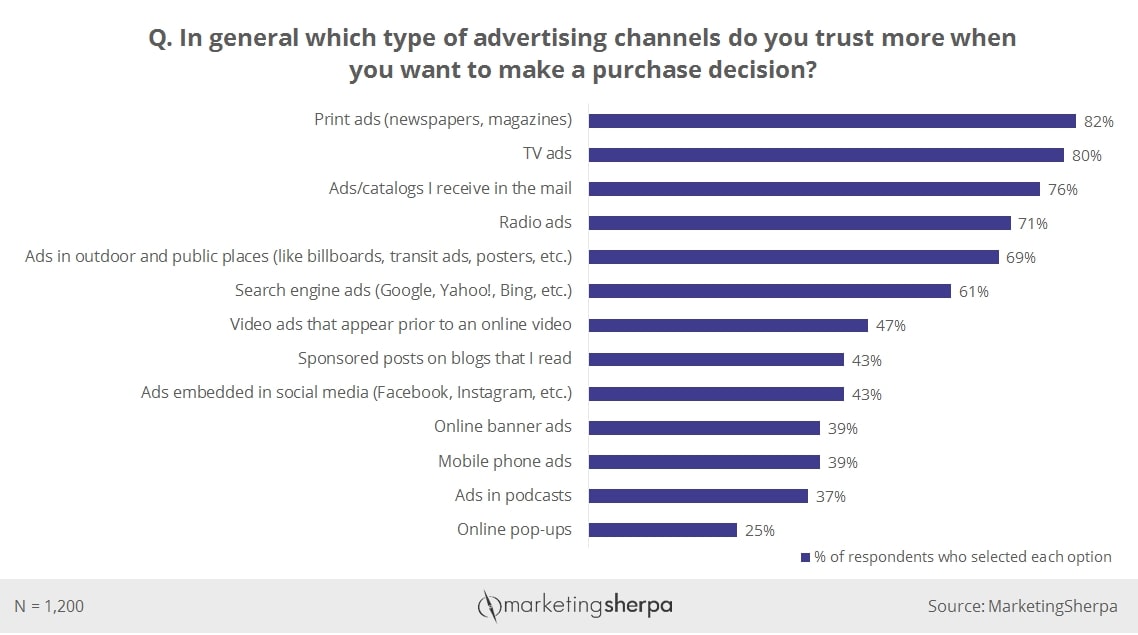Customer Acquisition: How to (Profitably) Gain New Customers for Your Business

Whether you’re a new entrepreneur trying to win over your first ten customers or a seasoned veteran acquiring your 10,000th, customer acquisition never stops being relevant.
But for many business owners, sales can be unpredictable and gaining new customers can feel like a game of chance.
If you want to grow your business consistently and profitably, you need to think of customer acquisition not as an outcome but as a process—one that considers how you can systematically acquire new customers, the cost to get them through your door, and how much money each one will spend with your business.
Table of contents
- What is customer acquisition?
- Calculating customer acquisition cost (CAC)
- Paid advertising
- Influencer sponsorships
- Email marketing
- Referral programs
- Traditional advertising
- Search engine optimization
- Building an audience
- Conclusion
What is customer acquisition?
Customer acquisition is the process of finding and persuading prospective customers to buy from your business in a way that is both measurable and repeatable—not random.
Customer acquisition happens in stages, which are often visualized as a customer acquisition funnel:

Marketers and entrepreneurs often discuss the funnel in 3 main stages:
-
Top of the funnel (awareness): At this stage, your goal is to generate awareness and leads amongst your target audience. Typically, you'll focus on a large, broad audience that may be interested in your company's brand or products, but without a definite intent to buy. A baby brand may use the hashtag #nurserydesign to expose their posts and products to those looking to decorate their nursery on Instagram.
-
Middle of the funnel (consideration): Prospective customers that move from the top of the funnel to the middle have usually taken an action that shows that they are considering a purchase, such as signing up for an email list or following your brand on social media. It is now up to you to convince them to become customers.
-
Bottom of the funnel (purchase): This is the final stage a prospect goes through before they convert into a customer. Usually, they have taken some action that indicates a strong intent to buy, whether it's adding a product to their cart or signing up for a free trial. Businesses will often send incentives, like a discount code, at this stage in order to convert prospects who are close to making the decision to buy.
There are many different ways a business can go about finding and converting these new customers, especially online. With digital marketing, it has become easier to track exactly how your business acquires new customers, discover and test new marketing tactics, and scale those that work.
How do you calculate customer acquisition cost (CAC)?
Almost every new customer comes with a cost that can be calculated based on the marketing effort put forth to acquire them.
In order to know whether your customer acquisition efforts are working, you will need to understand how to calculate your customer acquisition cost (CAC).
Your customer acquisition cost is the cost of marketing divided by the number of new customers acquired.
For example, say your Instagram page brings in 50 customers a month and you spend $500 creating content. Your customer acquisition cost would be $10:
Marketing Spend ($500) / New Customers ($50) = CAC ($10 per customer)
The reason businesses calculate their customer acquisition cost is to understand if their marketing approach is profitable. Using the above example, if each customer is spending $50 on average on their first purchase from your business, and your gross margin on each order is 50%, your profit would be $15 on each order.
Average Order Value ($50) x Gross Margin (50%) - Customer Acquisition Cost ($10) = Profit ($15)
For brands with a higher customer lifetime value, it may even make business sense for their customer acquisition cost to not be profitable on the first purchase. If your customer data tells you that the customers you acquire will likely continue buying from your brand after their initial purchase, you may be able to afford to spend more to acquire each new customer.
By using Google Analytics, Shopify Reports, and other tracking/reporting tools, it’s possible to know your customer acquisition cost for each marketing initiative. Experimenting with different customer acquisition strategies, and attributing the results, is the key to unlocking new ways to grow your business.
Let's explore some of the customer acquisition strategies you can use to grow your business and how to prioritize them.
7 customer acquisition strategies (and how to use them)
Free Webinar:
Marketing 101
Struggling to grow sales? Learn how to go from first day to first sale in this free training course.
1. Use paid advertising
One of the most common ways to acquire new customers is through online advertising. The reason many ecommerce brands turn to Facebook, Google and other platforms to run ads is that they provide extensive measurement tools that allow you to optimize your ads and get the most out of your budget.
When it comes to online advertising, Facebook Ads and Google Ads are among the biggest providers for paid traffic. But almost every other social platform, marketplace or search engine you can think of offers the option to buy ads, so deciding which one to use is a matter of understanding who your customer is and where they spend their time online.

Although each paid advertising platform has its particularities, they mainly all charge for user impressions (how many times your ad is seen), using a metric called CPMs (cost per one thousand impressions). They also usually allow advertisers to choose who they want to target based on demographics, interests, and other traits. By using these targeting parameters provided by an online advertising platform, you can narrow in on prospective customers and acquire them through paid ads.
Advantages
-
Fast growth: If you’re looking to rapidly scale your business, some would argue the quickest way to do it is by paying for traffic. Your business is guaranteed to get exposure, and with the right strategy and optimization techniques, businesses have been able to quickly increase their budget to acquire customers rapidly.
-
Targeting abilities: One of the great advantages of paid ads is the ability to choose exactly who your ads are shown to. With Facebook Ads, for example, you can use Interest and Behavior targeting to reach practically any unique niche based on user behavior on the platform.
Potential pitfalls
-
Expensive: There is an ongoing discussion about the rising CPM costs year-over-year of popular online ad platforms like Facebook, due to algorithm changes and competition. While it’s still possible to acquire customers profitably, brands may need to work on improving their website conversion rate, customer retention, and average order value to offset the rising costs of advertising.
-
Learning curve: Running paid ads isn’t rocket science, but the intricacies of the platform might be enough to intimidate those without experience. Luckily, we have free video courses that cover both the basics of ad platforms, like Facebook and Google, as well as blog posts that get into the details of optimizing and scaling your campaigns.
Good for
-
Businesses with a budget: Most advertising platforms don’t require upfront payments or minimum spends to access their audiences, but that doesn’t mean they’re cheap. Being successful at paid ads requires testing different creative variations, audiences, and overall strategy in order to be profitable, so those who have some money to invest in marketing will benefit long term.
-
Businesses with creative assets: One of the key factors to success with paid ads is having the right creative that can attract new customers to your business. If your brand has an archive of photos, videos, and copy that can successfully introduce new people to your product, and convert them into paying customers, you might want to consider putting some money behind them.
2. Negotiate influencer sponsorships
If you have a marketing budget, one of the quickest ways to get your product or brand in front of a relevant audience is by paying someone with an online following to promote it for you. Influencer marketing (through Instagrammers, YouTubers, bloggers, etc.) has become a popular form of online advertising, even rivaling referrals from real-life friends according to a survey done by Twitter.
The success of influencer marketing involves finding the right influencers to promote your product. The challenge is identifying those who have an active, engaged following that would be interested in your product, as well as the creative ability to produce content that reflects well on your brand.
Advantages
-
Brand awareness: With hundreds of thousands or even millions of followers, working with large influencers can bring people into your customer acquisition funnel through brand awareness. With influencer marketing, you are not only paying to acquire new customers but to have your product exposed to a wider audience so that when they are in the market for your particular product, it is top of mind.
-
Niche targeting: A micro-influencer, which is typically someone with a smaller, more dedicated following, can give businesses with niche products immediate access to a relevant online audience. These micro-influencers typically cost less to work with and have better engagement metrics, which means your sponsored content is more likely to get noticed by their followers and lead to a higher conversion rate of customers.
Potential pitfalls
-
Tracking ROI: One of the shortcomings of using influencers as a paid marketing channel is the lack of extensive tracking that most social platforms have for sponsorships. While paid advertising platforms can track those who view or click on your ads, most influencer posts need to be tracked through UTM links, discount codes, and other creative mechanisms. Without intentionally tracking them, you run the risk of not knowing whether a sponsorship produced sales or not.
-
Upfront payments: There are various platforms and experts that can connect your brand or business with influencers that will promote your product. Most of the time, a creator will ask for an upfront payment in the form of money or a product donation. This protects influencers against potential scammers but can be risky for businesses since there is no guarantee the influencer will help you acquire customers. Creating a commission-based payment structure, solidifying your agreement with a contract, or using an escrow service can help mitigate this risk.
Good for
-
Products that require demonstration: Say you have a new, innovative product that the average consumer isn’t familiar with. A simple photo advertisement might not be enough to drum up prospective customers. By working with an influencer, you can have them test out, demo, or provide validation for your product that can be shared online to help convince prospective customers.
-
Trendy brands or products: Oftentimes influencers are looked up to for their ability to discover new products or trends, whether it be in fashion, food, or technology. If your business or brand has that “cool” factor, approaching an influencer with the opportunity to advertise your product might be more appealing as it helps them keep their audience engaged, making it a worthwhile partnership on both sides.
3. Build an email list
Lead generation is often the first step to customer acquisition. Generating leads involves collecting information from potential customers in order to nurture them or retarget them with ads to eventually convert them into a customer. Most first-time visitors to your site probably won't buy on the spot, after all.
Collecting email addresses is seen as one of the best lead generation investments for customer acquisition because of the revenue that email marketing produces for businesses. According to Campaign Monitor, 59% of marketers surveyed see the most ROI from email.
There are plenty of ways to build an email list, from driving paid traffic to a page with an email capture form to offering a welcome discount on your website for new subscribers. Once your email list is built, you can run email campaigns and set up automated emails to send targeted messages to your list through email marketing services like Omnisend or Klaviyo. These emails can be personalized and triggered based on behavioral data to help you turn leads into customers.

Advantages
-
Recurring revenue: One of the biggest benefits to building an email list is that it gives you the ability to market to customers over a long period of time, extending the lifetime value of each customer acquired. Once the email is collected, you can set up email automation to continue engaging the customer and recommending new products.
-
Customer data: Aside from nurturing prospective customers, an email list can also help you find new prospects using "lookalike audiences". Lookalike audiences are a tool provided by advertising platforms like Facebook and Google, where an advertiser can upload a CSV of emails they collected to find users who “look like” the business' existing leads.
Potential pitfalls
-
Delivery rates: As spam filters become more sophisticated, getting your emails delivered to someone's inbox has become increasingly difficult for brands, with an estimated over 50% of emails considered as spam. Personalizing your email communications and following best practices when it comes to email design can help improve the deliverability of your campaigns.
-
Low-quality emails: Although a large email list sounds great, quality always overrides quantity. Although some email acquisition tactics may be working, it is important to analyze the conversion rate from each email source to make sure you are acquiring quality leads. One way to decrease your email marketing costs is by regularly cleaning your list of those who haven’t opened an email from you in a long time, otherwise known as your "unengaged list".
Good for
-
Businesses with multiple/consumable products: If your product is consumable, and therefore needs to be replenished (like coffee), or if you have a line of complementary products (like clothing), email can become your biggest source of recurring revenue. If your business has a full collection of products that you can continue to introduce to customers, you can maximize your return on investment by keeping in touch with them via email and creating strong repeat purchase habits.
-
New product launches: If you're still in the product development stage of creating your business, collecting emails can help you prepare for a successful launch. One famous example of building a pre-launch email list is the story of Harry’s, a men’s grooming brand, that collected close to 100,000 emails in one week. A waiting list helps put those who are genuinely interested in purchasing your product onto a list and builds suspense around being first in line for something new.
4. Start a referral program
A personal recommendation from someone you know goes a long way. Research from Nielson has shown that word-of-mouth referrals are one of the most influential forms of marketing. People trust those they know, so when a friend tells them to check out a new product or brand, they listen.
In order to use referrals as a new customer acquisition strategy, it is up to the business owner to make it easier for those loyal customers to recruit their friends.
This can be achieved by setting up a referral program in which your existing customers are rewarded each time they get someone new to purchase from your business. Apps like Referral Candy, Loyalty Lion, and Smile.io all offer ways to encourage customers to refer friends through marketing emails, discounts, and incentives for both the customer and their new recruited friend.

Advantages
-
Low cost: Since personal referrals are so effective, using a referral program is usually seen as a low-cost form of new customer acquisition. The fees associated with setting up a program include a subscription to a referral program app and the discounts given to the new customers who are recruited.
-
Repeat purchases: Often when a customer refers a friend, they are rewarded with a small perk, like a discount code off their next purchase. This creates the added benefit of encouraging repeat purchases from existing customers—an extra boost in revenue that can help make your referral program even more profitable.
-
Customer loyalty: According to a study published by several prominent business school professors, referred customers are 18% less likely to churn than non-referred customers and 25% more likely to spend more over their lifetime with your brand. These numbers show that referral programs bring in customers that are more loyal and profitable for your business.
Potential pitfalls
-
Low engagement: While you might be excited to launch your referral program, there is no guarantee your customers will share that same enthusiasm and want to participate. If your customers haven’t received good service from your business or aren't in love with your products enough to recommend them, a referral program might not be the right customer acquisition channel for you.
-
Organization and tracking: Since referral programs can involve creating customer rewards, tracking who has referred customers and even loyalty points for each customer, staying organized is an essential part of making the program run smoothly. This is why many businesses use an app to organize their entire referral program. If you’re thinking of keeping track of referrals manually, you may run into issues that could frustrate customers.
Good for
-
Businesses with existing customers: It goes without saying that to run a successful referral program, a business needs to have an existing customer base to work with. If you have a low number of existing customers, their referrals may not even cover the cost of setting up a referral program.
-
Businesses with loyal customers: While every business wants to have loyal, engaged customers who would love to share your products with their friends, not all are strategically designed to do this. Having good customer service, quick delivery, and easy returns all help create more loyal customers who are willing to refer their friends.
5. Running traditional ads
It turns out that digital marketing hasn't killed old school advertising, as modern marketers start to return to more traditional forms of advertising, like print media and direct mail, to acquire new customers.

With the ubiquity of display ads, digital marketing efforts have become easier for consumers to ignore or opt-out of through ad blockers. Traditional media, from small scale efforts like printed flyers to billboards and even TV ads can be a good way to diversify your customer acquisition channels to reach a new, targeted audience.
At the same time, technology has made significant improvements to both the costs and accessibility of traditional advertising methods for small businesses. There are now apps like Touchcard that can connect to your online store and use customer data to send out physical postcards to your leads or customers.

Advantages
-
Decreasing costs: According to AdAge, the cost to advertise on the biggest TV shows is decreasing. While the prices for a commercial on the top 10 programs are far outside the budget of most businesses, some research suggests TV advertising CPMs are as low as $2.26. If your goal is to reach as many people as possible for the lowest cost, the broad and massive reach of TV ads might make economic sense for your brand.
-
Consumer trust: The trust that consumers have in digital ads has increased over time, especially as more well-known brands begin running online campaigns. However, print and TV ads still top the charts when it comes to advertising channels that consumers trust most, according to a US study published by MarketingSherpa.
Potential pitfalls
-
Tracking: The flipside of having such a broad reach with traditional advertising is the lack of precision tracking that exists with digital channels. When running a print or TV campaign, it is likely not possible to always know the precise ROI from a campaign, since those who view or take action after seeing your ads aren’t "cookied" like they are when they visit your website directly. However, some digital-first brands like Icon above have demonstrated how integrating a first-purchase discount code into their subways ads can help track customer acquisition from these campaigns.
-
Upfront investment: The budget commitment and lack of flexibility inherent to traditional advertising are often seen as risky. Digital, programmatic advertising allows businesses to pivot and reinvest based on real-time results from their campaigns, and learn what works on a smaller scale budget. If you haven’t tested your marketing message in a more flexible environment first, the upfront investment of traditional media could leave you with disappointing results.
Good for
-
Local businesses: With traditional advertising bearing a heavy upfront fee, efficiencies in these channels might be found with local print, TV, and radio ads. If your business can only ship to a specific state or is designed for a local audience, like celebrating a city’s sports team, advertising in local media can reward you with low-cost reach while still being highly targeted.
-
Businesses with high-priced products: Average order value plays a significant role when it comes to high-priced media. Companies like Endy and Casper are known for investing in out-of-home advertising on public transportation to sell their mattresses, which often cost over $1,000. If your order value is high and your profit margins strong, the risk of spending on big-budget traditional ads can be offset by the need for fewer purchases to be profitable.
6. Search engine optimization
When looking for a product or service, many consumers begin their search with Google. Creating website content that helps your brand show up in Google search results for relevant queries is known as SEO, or Search Engine Optimization.
Doing keyword research, and implementing your findings into a content strategy for your website pages and blog can help you climb Google’s rankings, bringing you search traffic filled with potential customers to your website.

Advantages
-
Passive, organic traffic: Every second, over 40,000 queries are entered into Google’s search engine, making it the most visited website on the internet. If you can optimize your website and content towards this goal, you can capture a small percentage of those searching for products in your niche and successfully acquire them as customers.
-
Evergreen: SEO is often referred to as a source of “evergreen” traffic, since content created and posted months, or even years ago, can continue to rank on the first page of Google and drive traffic to your site. A good piece of evergreen content can bring your website new traffic without the need to continuously pay for every new visitor.
Potential pitfalls
-
Slow growth: If you want to show up first on Google’s search results, you can pay with Google Ads to be the first sponsored link visitors see. However, if you are aiming to show up organically on the first page, it can often take time and patience for Google to recognize your website as an authoritative source.
-
Competition: Even though the term “temporary tattoos” has over 30,000 monthly searches, Google displays over 237 million results for the term. Certain niches are highly competitive when it comes to search rankings, which can make ranking on the first page more difficult. Tools like Ubersuggest and Ahrefs can help you understand the level of competition for different search queries and keywords, and provide ideas for less competitive alternatives.
Good for
-
Those willing to play the long game: SEO done right is a measurable and reliable source of organic traffic, but being successful requires a consistent effort and constant learning. The Google algorithm is prone to change and staying on top of the latest strategies on both the technical and creative side of SEO is essential to making this channel work.
-
Content creators: While SEO may seem quite technical, it is widely known that the quality of a website's content to satisfy searchers plays a critical role in its ability to rank in Google search results. The ability to write well and come up with creative content ideas that align with your keyword research can help rank your content above the competition.
7. Creating an online audience
With social media and its many platforms like Facebook, Instagram, YouTube, and Twitch, individuals have been able to attract huge online followings of potential customers. Companies like SandCloud and Gym Shark have cultivated Instagram followings in the hundreds of thousands and even millions, becoming influencers themselves.

There are several ways to build an online audience on social media. Almost all of them require time, consistency and content to attract new followers and keep them engaged. Your online following not only lends your brand authority, but it also creates an audience of customers you can reach whenever you want to promote a new product or increase sales.
Advantages
-
Organic traffic: Although there might be costs associated with creating an engaging social media account, it is often seen as a source of organic traffic since they can help share your content for free. Viral videos can show up on the highly trafficked trending or discover page of different platforms, and your followers can share your content or tag your brand, bringing you more organic followers and potential customers.
-
Social proof: Social media has no shortage of visible numbers, whether it’s the number of likes or comments a photo gets, or your total subscribers, all of these metrics lend authority to your brand in the form of social proof. When potential customers decide to check your brand out online (which they often do), the size of your online audience and its engagement adds legitimacy to your brand.
Potential pitfalls
-
Slow growth: If creating an online audience was easy, everyone would be an influencer. Building an organic following, and turning it into a customer acquisition channel, takes time, especially in contrast to paid advertising.
-
Algorithm changes: One of the biggest threats to content creators on any platform is a sudden change in the algorithm that once helped them gain traction. In 2016, some of YouTube's biggest channels claimed that their views dropped as much as 30% due to suspected algorithm changes. If you decide to build an online audience, your ability to reach that audience and convert them into customers will always be controlled in some part by the platform itself.
Good for
-
Content creators: If you’re the creative type who is skilled in the area of writing, photography, video, or just generally entertaining people online, building an online audience as a form of customer acquisition might be a good use of your skills.
-
Businesses on a budget: If you’re strapped for cash, creating an online audience organically can be a cost-effective way to attract new customers. Unlike paid ads, there isn’t a fixed cost associated with exposing your brand to new people. Rather than dollars alone, online audiences can be built on your own creativity.
How will you grow?
While customer loyalty and repeat purchases are an important element to the overall health of your business, attracting new customers through customer acquisition can help you grow beyond your current base.
Customer acquisition is about demystifying how customers discover your brand and why they buy from you so that you can optimize and scale that process. This will allow you to spend your marketing dollars more strategically, and grow your business steadily over time.
Knowing which channels will work as a customer acquisition tool for your business involves continuously testing new channels and approaches, allowing you to find out what works best for your unique business and prevent you from being too reliant on a single source.
